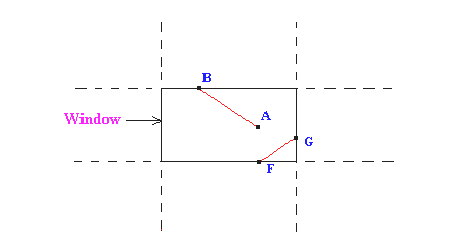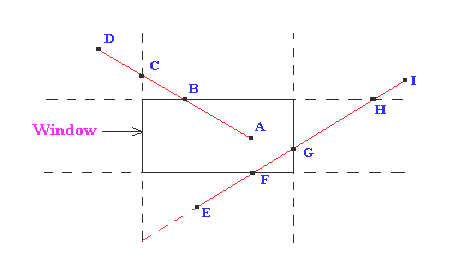
Before Clipping

Point A has an outcode of 0000 and point D has an outcode of 1001. The logical AND of these outcodes is zero; therefore, the line cannot be trivally rejected. Also, the logical OR of the outcodes is not zero; therefore, the line cannot be trivally accepted. The algorithm then chooses D as the outside point (its outcode contains 1's). By our testing order, we first use the top edge to clip AD at B. The algorithm then recomputes B's outcode as 0000. With the next iteration of the algorithm, AB is tested and is trivially accepted and displayed.
Point E has an outcode of 0100, while point I's outcode is 1010. The results of the trivial tests show that the line can neither be trivally rejected or accepted. Point E is determined to be an outside point, so the algorithm clips the line against the bottom edge of the window. Now line EI has been clipped to be line FI. Line FI is tested and cannot be trivially accepted or rejected. Point F has an outcode of 0000, so the algorithm chooses point I as an outside point since its outcode is1010. The line FI is clipped against the window's top edge, yielding a new line FH. Line FH cannot be trivally accepted or rejected. Since H's outcode is 0010, the next iteration of the algorthm clips against the window's right edge, yielding line FG. The next iteration of the algorithm tests FG, and it is trivially accepted and display.
After Clipping

From P. Asokarathinam -- see
details
27.11.1996
